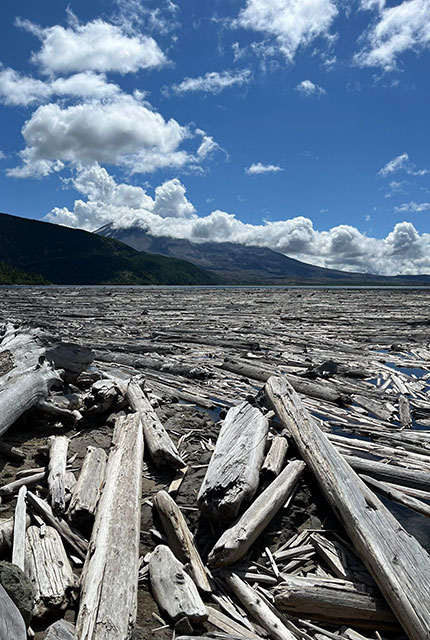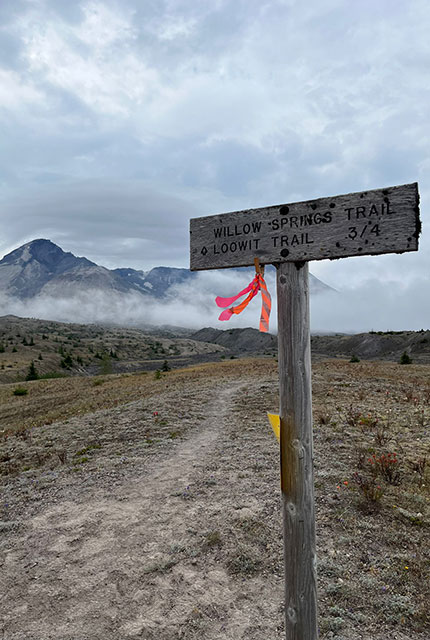In photos: a volcanic field trip
Volcanologist Samantha Engwell visited the Cascades in the United States to learn more about the 1980 Mount St Helens volcanic eruption.
31/08/2023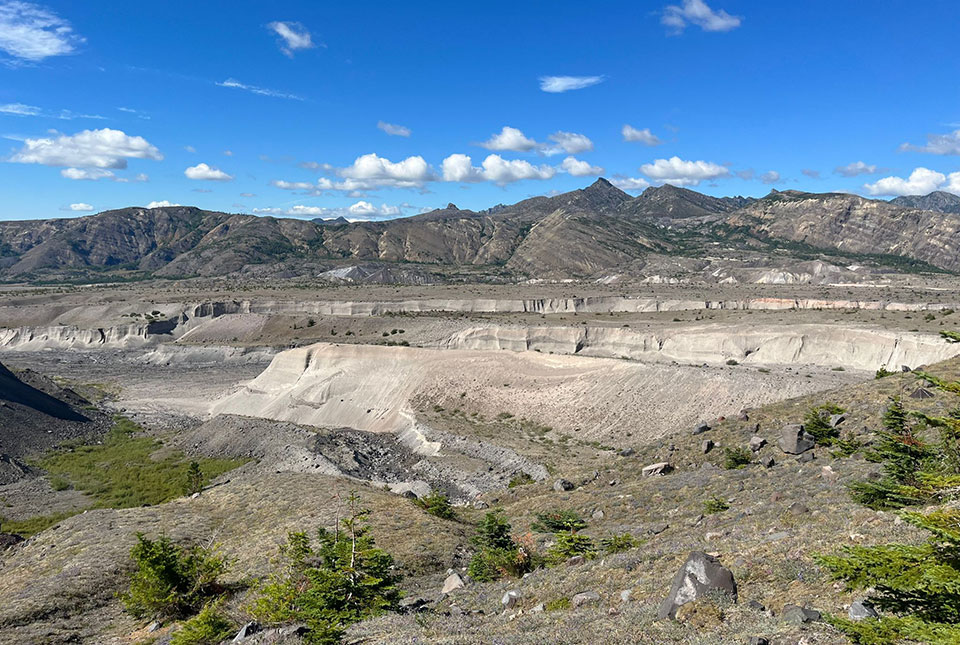
I have recently returned from a couple of weeks of fieldwork on Mount St Helens volcano in the Cascades, US, with Julia Eychenne from Laboratoire Magmas et Volcans (LMV) Volcanology, France and David Damby from the United States Geological Survey, and in collaboration with the Cascades Volcano Obervatory. The focus of our fieldwork was the 1980 cataclysmic eruption of Mount St Helens, which produced the largest debris avalanche in recorded history as much of the northern flank of the volcano was removed. This avalanche led to a powerful blast which stripped much of the surrounding area of trees and produced a plume of ash that lofted to more than 30 km above sea level. Ash was dispersed many hundreds of kilometres away from the volcano. Plinian plumes, pyroclastic density currents and lahars (mixtures of volcanic material and water) followed and continued over the following months.
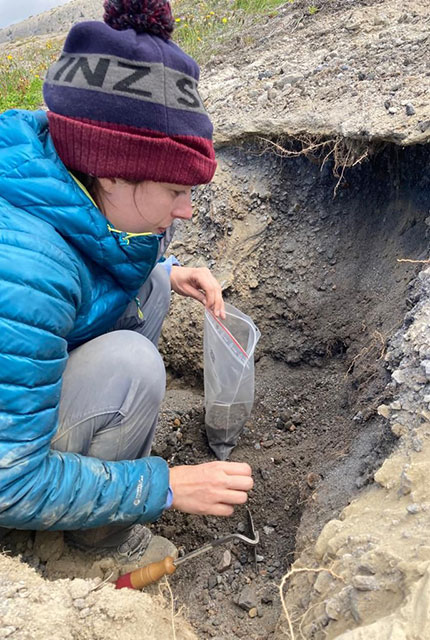
Sam Engwell sampling blast deposits from the 1980 eruption of Mount St Helens. BGS © UKRI.
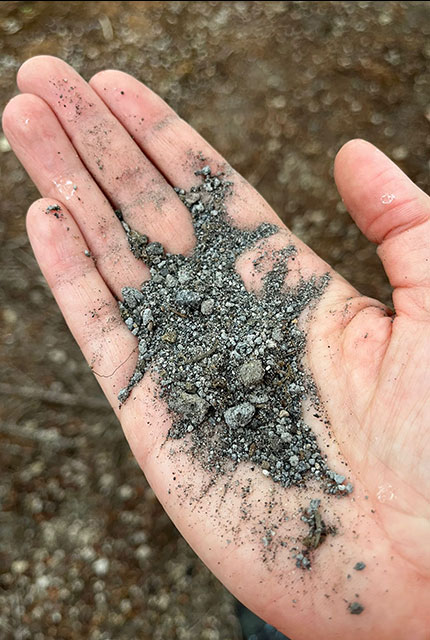
Sam Engwell sampling blast deposits from the 1980 eruption of Mount St Helens. BGS © UKRI.
Given the scale and the range of eruptive behaviour that occurred during this eruption, it presents a case study that enables scientific investigation from a range of perspectives. Across our field team, interests ranged from eruption dynamics, human health impacts and ash resuspension. We dug holes through the deposits to allow us to access the whole sequence of the eruption, collecting blast samples and ash deposits from several locations across the blast area.
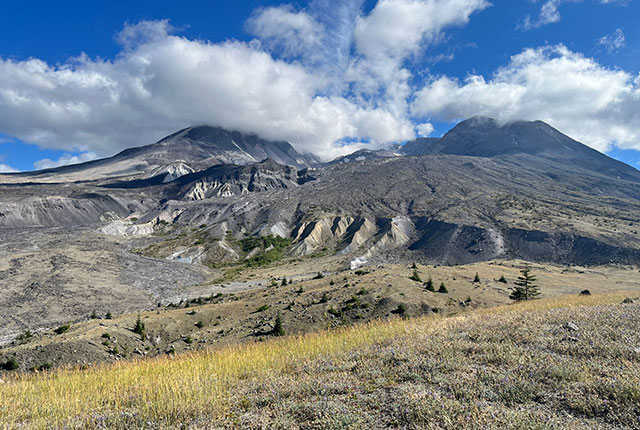
The view towards Mount St Helens’ crater from the pumice plain. BGS © UKRI.
While we initially focused on the 18 May 1980 blast deposits, a day in the field with Cascades Volcano Observatory scientist Heather Wright introduced us to deposits from several older eruptions from Mount St Helens which also piqued our interest.
Over the coming months, the team will conduct geophysical and chemical analyses to improve understanding of the deposits, providing further insights into the eruption.
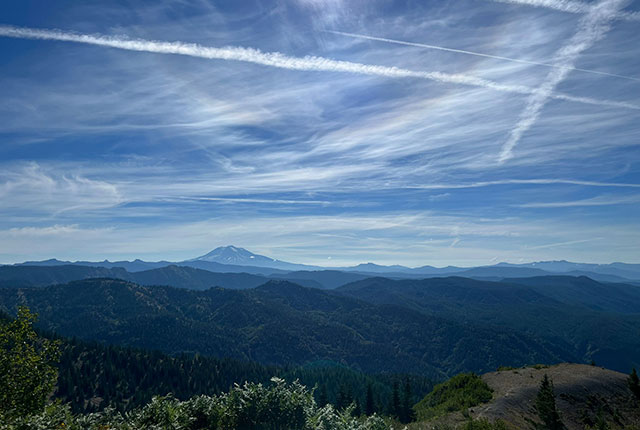
Mount Adams also viewed from Mount St Helens. BGS © UKRI.
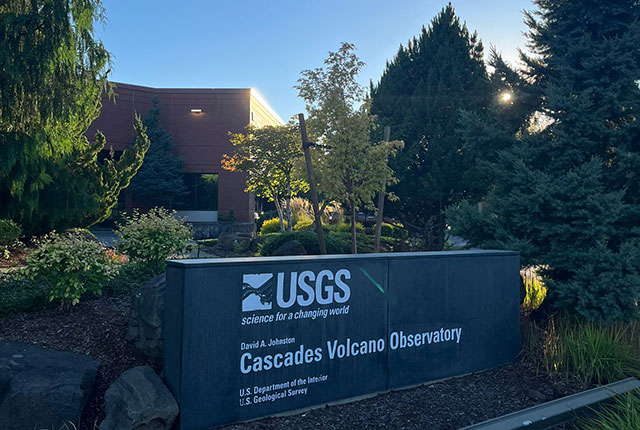
Cascades Volcano Observatory, where we discussed Mount St Helens and its eruptions with USGS scientists. BGS © UKRI.
The fieldwork was made possible through collaboration with Cascades Volcano Observatory. Many thanks to Alexa Van Eaton, Heather Wright and Richard Waitt for providing lots of context on the eruption, deposits and field relationships, and ensuring we had a great trip!
About author

Dr Samantha Engwell
Geologist and volcanologist



